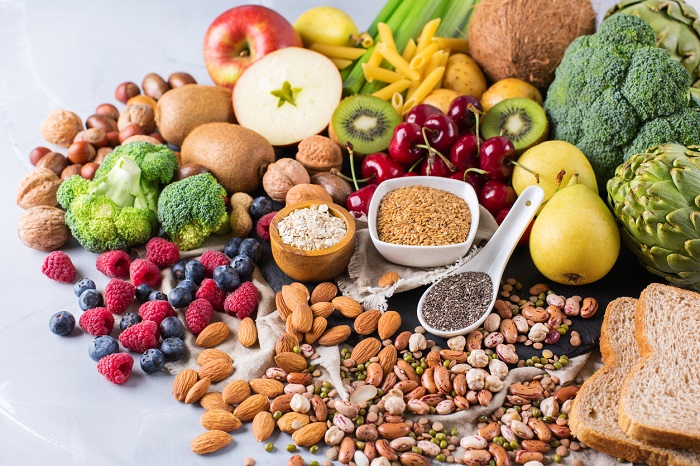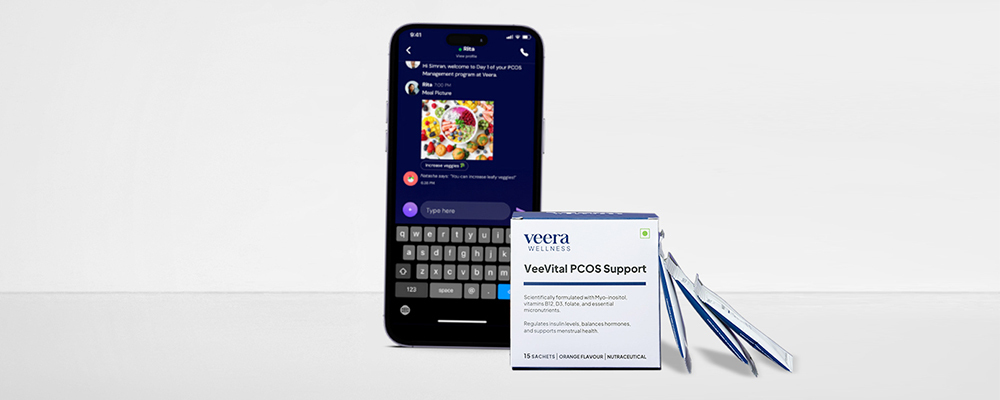Regular exercise is crucial for everyone due to its numerous benefits, but individuals with PCOS require it even more. Given their insulin resistance, those with PCOS are at a higher risk of obesity and diabetes, making weight reduction challenging. The absence of physical activity and an elevated body weight are interconnected, potentially exacerbating insulin resistance. Engaging in at-home PCOS exercises can help in weight loss. Furthermore, exercise contributes to hormone regulation and decreases testosterone levels, offering additional advantages. This, in turn, alleviates PCOS symptoms such as acne and excessive hair growth.
Understanding PCOS and Exercise
Balancing Hormones: Exercise plays a crucial role in hormone balance by increasing endorphins while reducing estrogen and insulin levels.
- Enhancing Mood: People with PCOS may be more prone to depression due to hormone imbalances and PCOS symptoms. Regular exercise releases endorphins, promoting a positive mood.
- Facilitating Weight Loss: Weight loss efforts can be challenging for individuals with PCOS, but engaging in daily exercises you enjoy, coupled with a healthy diet, can contribute to effective weight management.
- Improving Sleep Quality: Exercise promotes restful sleep, particularly important for those with PCOS who may experience issues like snoring, sleep apnea, and other sleep disturbances, often exacerbated by obesity.
- Reducing Diabetes Risk: Aerobic activity enhances insulin sensitivity, lowering the risk of diabetes, a significant concern for individuals with PCOS.
- Managing Cholesterol: Women with PCOS are more prone to elevated cholesterol levels, but exercise, combined with a healthy diet, can contribute to lowering cholesterol.
- Lowering Cardiovascular Disease Risk: Given the higher likelihood of high blood pressure and cardiovascular disease in individuals with PCOS, regular exercise significantly improves heart health.
What Workouts Are Good for Women With Polycystic Ovary Syndrome?
Steady-State Cardiovascular Workouts:
Engaging in steady-state cardiovascular workouts offers significant benefits for women with Polycystic Ovary Syndrome (PCOS), a condition associated with insulin resistance, weight gain, and various hormonal imbalances. These workouts are characterized by maintaining a consistent exercise intensity throughout the session, encompassing activities such as walking, running, swimming, cycling, and hiking. Even just 30 minutes a day of such exercises can contribute to a range of positive outcomes for individuals with PCOS.
Cardiovascular exercise is particularly advantageous for women with PCOS due to their increased susceptibility to insulin resistance and weight-related challenges. This form of exercise enhances the body’s sensitivity to insulin, mitigating the risk of cholesterol deposition in arteries that could lead to conditions like high blood pressure, heart disease, and type-2 diabetes. Additionally, steady-state cardiovascular workouts play a role in elevating mood and facilitating weight loss, making them a holistic approach to addressing various aspects of PCOS.
HIIT Workouts:
High-intensity interval Training (HIIT) stands out as an effective workout strategy for women with PCOS, offering benefits such as fat-burning and increased cardiovascular fitness. HIIT involves short, intense bursts of cardio exercise followed by periods of rest or lower-intensity activity. For instance, one might engage in a minute of running followed by a minute or two of jogging or walking, repeating this pattern for about 10 minutes.
HIIT’s efficiency lies in its ability to rapidly improve cardiovascular fitness by intensifying effort rather than prolonging exercise duration. Research indicates that HIIT can enhance insulin resistance and promote fat burn. The intense nature of HIIT creates an oxygen debt in muscles, triggering excess post-exercise oxygen consumption (EPOC) or afterburn, wherein the body continues to burn fat even after the workout concludes.
Specific studies focusing on women with PCOS have demonstrated that a 10-week HIIT program can improve insulin resistance, irrespective of weight loss. Furthermore, HIIT has been shown to reduce excess testosterone levels, addressing hormonal imbalances associated with PCOS and potentially alleviating its symptoms.
Strength Training:
Incorporating strength training into an exercise routine offers diverse benefits for individuals with PCOS, including an increased metabolic rate, reduced insulin resistance, enhanced muscle development, and decreased body fat. Strength training involves using one’s body weight, resistance bands, or weights to build muscle.
Research comparing different exercise interventions for PCOS has identified strength training as particularly effective in reducing testosterone levels. Both vigorous and moderate intensities of strength training have demonstrated positive results, with a greater frequency of sessions yielding better outcomes. Fundamental exercises like push-ups and tricep dips build muscle and upper body strength and improve insulin function, contributing to calorie burning even after completing the workout.
Mind-Body Exercises:
Women with PCOS often grapple with depression, stress, and anxiety exacerbated by their symptoms. Research has shown a higher prevalence of depression among overweight women with PCOS. Stress, in turn, can worsen various PCOS symptoms. Mind-body exercises such as yoga, tai chi, and pilates offer a multifaceted approach by reducing stress, burning calories, and enhancing mood.
These exercises contribute not only to physical well-being but also address the psychological aspects of PCOS. By integrating mind-body exercises into a comprehensive wellness routine that includes a healthy diet and regular cardiovascular workouts, individuals with PCOS can create a holistic strategy for managing their condition and improving overall quality of life.
Tips To Create a Workout Routine
Set Realistic Goals
Experts suggest that when establishing fitness goals, it’s common to hinder progress by setting overly ambitious targets. Taking a composed and confident approach to goal-setting is advisable. Consider what you truly want to achieve and the resources you can allocate to workouts, diet, and recovery. It is important to be open, honest, and nonjudgmental about your available resources, especially time. For instance, if a packed schedule hinders gym commitments, evaluate priorities and time constraints before setting goals.
Consider Your Schedule
Avoid scheduling your workout sessions after a heavy meal or just before sleep as it may hamper your digestion and cause irregularity in your sleep cycle. Experts advise to exercise early in the morning before beginning your day or few hours before dinner time.
Focus on Consistency
Track progress using concrete metrics. For weight training, record weight and repetitions per exercise. If aiming for weight loss, document changing weight. Choose suitable methods; bathroom scales may not distinguish muscle from fat, so consider a tape measure or assess clothing fit. Diversify tracking methods and document regularly, perhaps weekly. Record exercise sessions, daily diet, and measurements for weight loss. Acknowledge incidental achievements, like increased energy or fitting into smaller clothing, offering diverse avenues for celebrating success.
Incorporate Strength Training
Strength training exercises often utilize weights, resistance bands, or your body weight, focusing on muscle development. Like cardio, strength training offers various intensity levels, each with its advantages and disadvantages. Moderate strength exercise, for instance, can lead to improved blood pressure, enhanced metabolic function, and stronger bones, contributing to overall well-being.
Try Low-Impact Activities
Understand your starting point to choose comfortable activities and progress at a realistic pace. Set a reasonable timeframe; for a 20 kg weight loss, aim for 1 kg of body fat loss every one to two weeks, allowing 20 to 40 weeks. View exercise routines as mini-goals, such as exercising most days, and fostering motivation through successive achievements.
Take It One Step at a Time
The initial months of a new exercise routine are tough. Adjust short-term goals, persist, and trust it will get easier. Celebrate even small achievements; committing to a healthier lifestyle is significant. Reflect on progress by revisiting your training diary. Consider a secondary fitness goal, like jogging for 20 minutes, as a notable success.
Listen to Your Body
Too much of anything is harmful, so listen carefully to your body and take rest when you are tired or injured or having any breathing difficulty.
Other Things To Keep In Mind When Designing a Fitness Regimen
Stress Management
Persistent stress can take a toll on your well-being, manifesting in symptoms like low energy, headaches, and an upset stomach. Increased irritability and difficulty shaking off minor issues may indicate a need for heightened stress management. Effective strategies include exercise, fostering positive relationships, practising meditation, embracing humour, and taking breaks from stressors.
Diet & Nutrition
Integrate these habits into your daily meals and snacks for a healthy eating approach. Ensure each meal includes a serving of lean proteins like skinless chicken, fish, or tofu while cooking with healthful fats such as olive oil. Add a variety of vegetables like broccoli, kale, spinach, and peppers, and include a serving of beans, nuts, or lentils for added nutritional value. Opt for brightly coloured fruits like red grapes, blueberries, oranges, and cherries, and choose whole-grain bread and pasta options for a well-rounded and nutritious diet.
Sign Up To Get Individualised Workouts To Fight PCOS
For more such fitness and workout tips like this, all you have to do is Join Veera Health’s PCOS Program and upgrade it to get exclusive access to our Fitness Pro program. What’s in Store for You:
- Tailored workout plans
- Chat with a Fitness Coach
- Expert tips and advice for maximum results
- Root cause analysis
- Habit Building
- Dedicated Coach
- Exclusive access to Veera app
Learn More With Veera
Before engaging in these exercises, it is advisable to seek guidance from your personal trainer or fitness specialist to understand their intricacies. Maintaining consistency in your workout routine is essential for long-term symptom relief, so consider finding a workout buddy to provide motivation. The entire process can be enjoyable, fostering accountability between partners as you work towards your fitness goals.


















